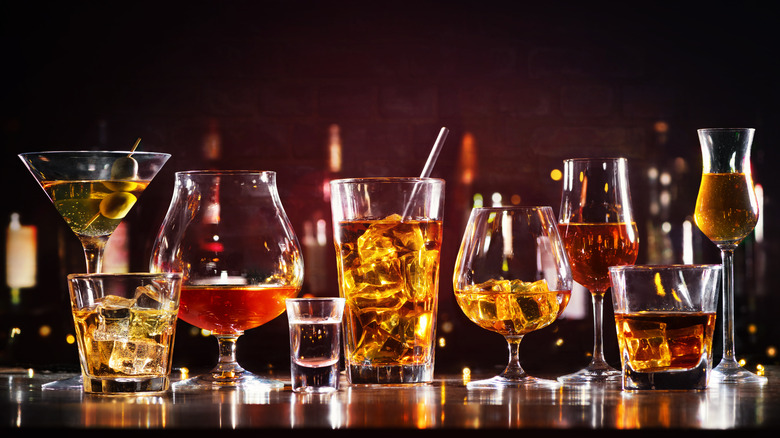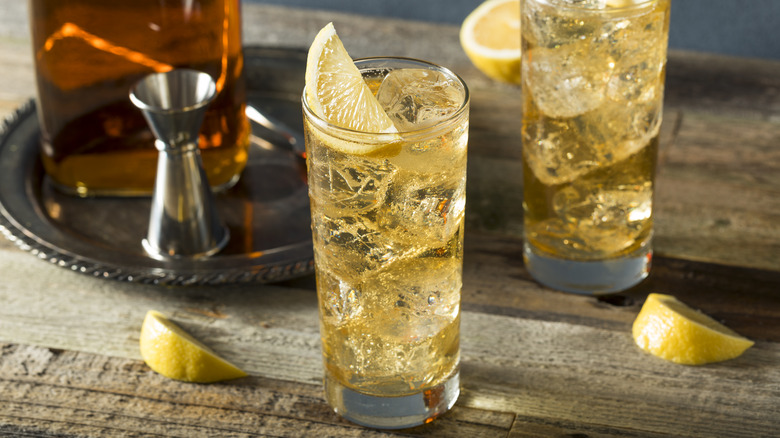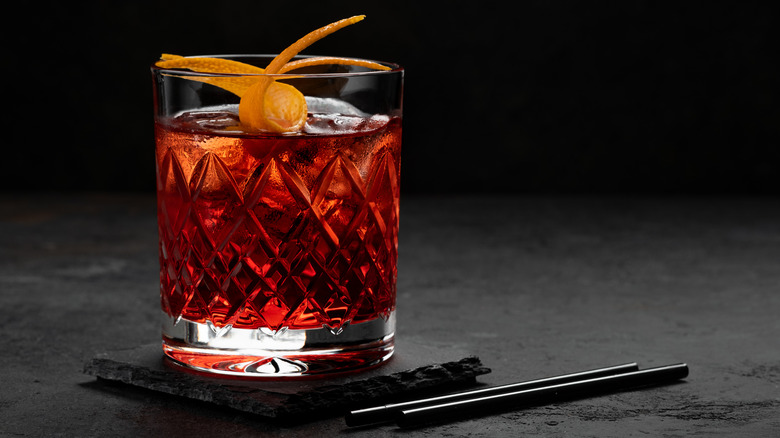The Difference Between Highball And Lowball Drinks
Bartending can be as simple as pouring a shot of your favorite spirit or as intricate as mixing a 12-ingredient cocktail, but even the most amateur bartenders recognize that different drinks come in different glasses. The fundamental rules of bartending pair certain drinks with a specific type of glass, starting with highball and lowball glasses.
The obvious difference between highball and lowball glasses starts with their shapes; The highball glass is tall and thin, holding between 10 to 14 ounces, and the lowball glass is short and wide, with just enough room for between 4 and 8 ounces. As for their beverages, highball glasses hold cocktails that consist of a spirit, one or more mixers, and ice while lowball glasses contain cocktails with liquor, liqueurs, and mixers, and are also used as receptacles for neat pours and straight spirits on the rocks.
The reason for categorizing drinks into these two different glasses has less to do with presentation and more with functionality. Lowball and highball glasses enhance a cocktail's texture and flavor, facilitate their preparation, and influence the way we drink them.
Highball drinks
Highball glasses originated in the U.S. during the 19th century as the go-to vessel for railway workers to guzzle down their favorite whiskey drinks. Highball glasses have since become the preferred receptacle for cocktails with a higher ratio of mixer to spirit.
Additionally, highball glasses are especially hospitable for carbonated mixers. Their tall stature keeps soda bubbly and their larger volume makes it easy to hold a lot of mixer and ice. Highball drinks are easy to prepare for their short ingredient list and an equipment-free pour-over method; Bartenders make highball drinks by pouring the liquor over ice first, followed by a mixer.
Highball drinks can encompass any spirit but have a lower alcohol content than lowball drinks, thanks to the high volume of the mixer. The most popular highball drinks include rum and coke (Cuba libre), vodka and orange juice (screwdriver), vodka or gin and tonic, and ranch water (tequila and soda).
Lowball drinks
Lowball glasses are the classier, more iconic cocktail glasses that you probably associate with country club cigar lounges. They're modeled off the European drinking goblet known as a quaich, which was known as a sign of high status.
The lowball glass is more versatile than the highball glass, and its design showcases high-end liquors and more intricate cocktails. The wide brim and short stature help bring out the complex flavor profile and aroma of a spirit in the same way that wine glasses extract and exude wine's aromas. And, their thick base provides a firm foundation that holds up to muddling, which is a common preparation method for popular lowball cocktails like the classic whiskey Old Fashioned and Sazerac.
In addition to neat pours and spirits on the rocks, lowball drinks, which include the Negroni, White Russian, Manhattan, and Gin Smash, are more elaborate and complex to make and drink, and should be sipped slowly. It also provides room for ice cubes or ice blocks, giving the lowball glass its alternate name: rocks glass.


